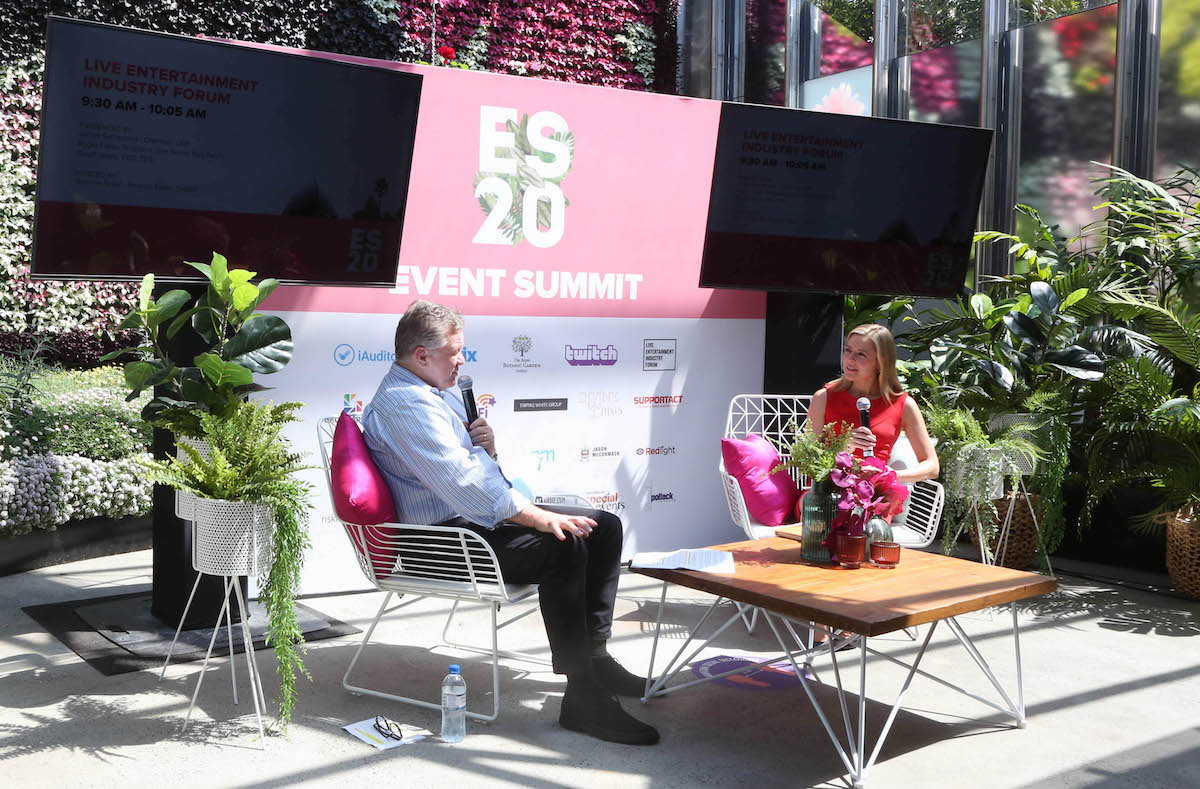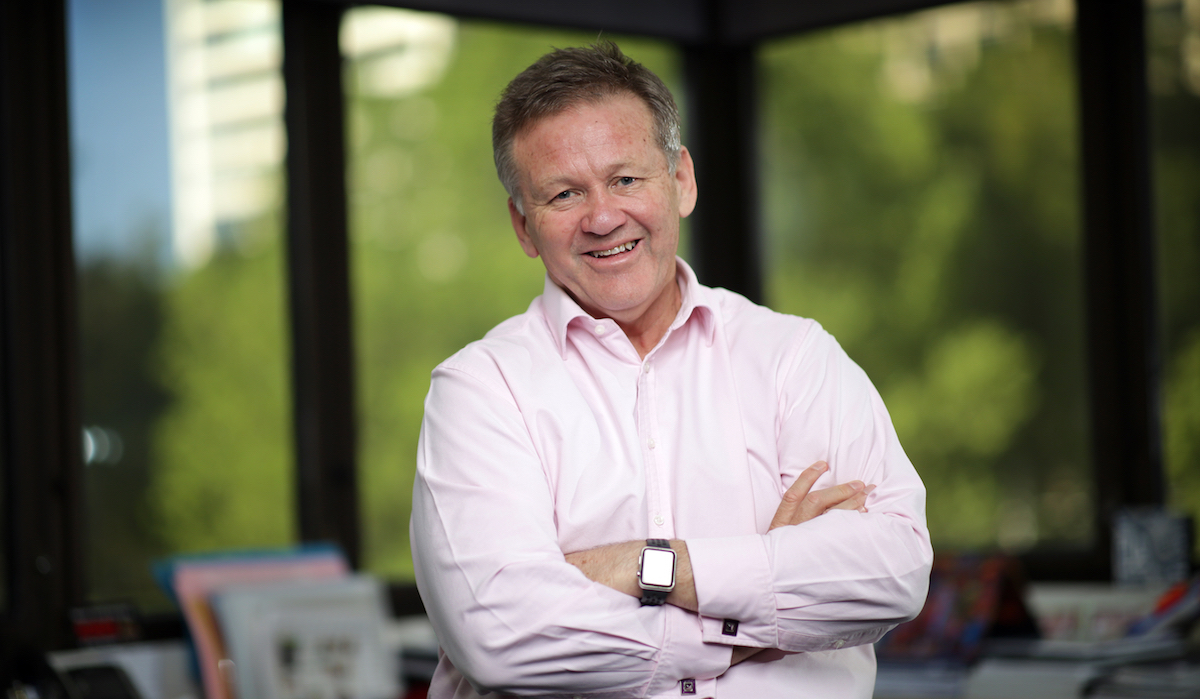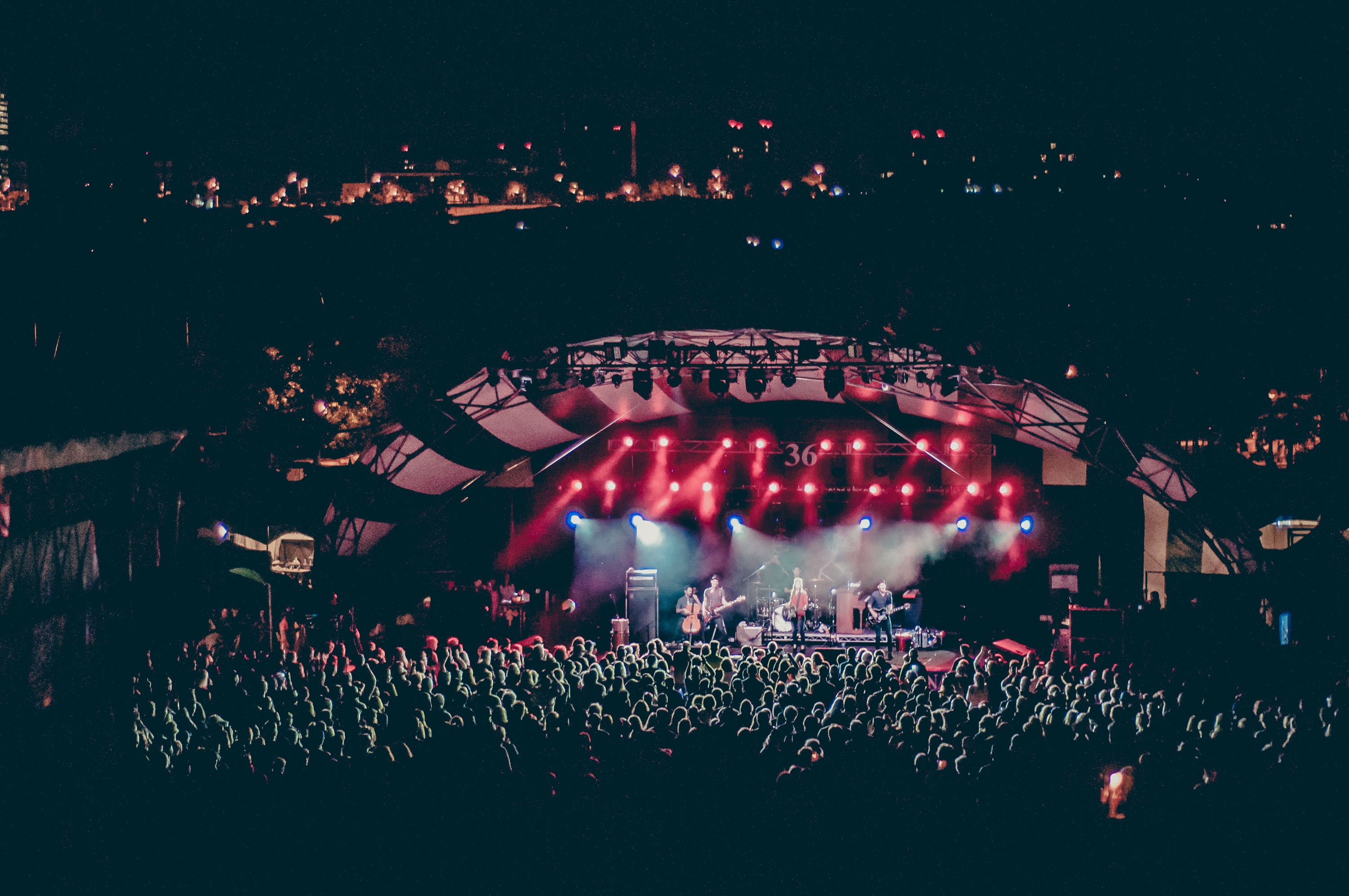Geoff Jones, Roger Field discuss live music’s rocky road to recovery

The success of live events in the future won’t just hinge on following COVID-19 guidelines or juggling the numbers to work around capped audience numbers.
COVID-19 has created in consumers a greater level of expectations in the live experience.
It’s up to promoters to adopt new technology from other sectors like health and travel to make it more personalised and frictionless.
This was one of the topics discussed at Event Summit 2020 at The Calyx, Royal Botanic Garden in Sydney. The October 14 stream on Twitch was watched by over 1,500 people.
Needless to say, the main topic was this week’s EY report on the events sector, commissioned by the Live Entertainment Industry Forum (LEIF).
As reported by TMN the report forecasts that if current restrictions remain as they are, the value of the live events and entertainment sector will drop from $36.4 billion to $12.2 billion (a drop of 64% and a loss of $23 billion) by the end of 2020, and a loss of 79,000 full-time jobs (or 150,000 if you include casuals and contract workers).
The workforce is 51% female and 55% are under the age of 40, coincidentally two overall vulnerable groups in the current pandemic.
EY’s associate partner of sports, events and venues consulting, Matt Colston, expanded on what makes up the definition of the sector.
There are four elements – genre-based (theatre, concerts), venue-based (bars, pubs), professional sports (codes and leagues) and major events like the Australian Open and the Grand Prix.
The LEIF panel – with James Sutherland (chair), Geoff Jones (CEO, TEG) and Roger Field (president, Live Nation Asia Pacific) data-dived into the report’s results and outlined what sort of help the industry needed.
“EY’s report demonstrates that when the live entertainment industry does badly, Australia loses. Almost all of our revenue disappeared overnight when COVID-19 restrictions closed down the industry in March,” Jones said.
“While the return of sport with limited capacities has offset some of that impact in EY’s figures, for commercial live entertainment operators both large and small, revenue in September/October remains at no more than 10% of 2019 levels.”

Pictured: TEG chief Geoff Jones.
Field offered anecdotal examples of two LN tours to demonstrate the economics at play.
A 13-date arena tour employed 7,000 roles each night, the booking of 240 airline tickets to the value of just under $100,000 and 2,500 hotel room nights of around $800,000.
A six-date stadium tour shifted 320,000 tickets, averaged 2,200 roles per night (13,500 in total) and booked $1.2 million worth of hotel rooms.
LEIF will lobby to the government to extend JobKeeper (and make adjustments to acknowledge that the sector is totally unique and different from other industries), lift domestic and international border restrictions, return to 100% capacity in venues, help with getting insurance, get on with allocating the $75 million RISE scheme and make sure that the commercial sector is not passed by, and follow the UK’s lead in dropping GST on concert tickets for a time.
“That’s not going to mean we have more money in our pockets,” Jones said.
“That will help supplement what is going to be significant COVID costs that are going to be imposed on the promoter and the venue in order to get the public back to our venues.”
The live industry’s theory is to bring the fans back, and the jobs will follow.
The report found that 87% of respondents are comfortable returning to clubs and venues “within weeks or months” and 77% would attend an event within the same period.

With this should come using technology to increase the seamlessness and speed of the live experience and increase trust in the safety of venues, stressed David Borean, VP of brand & customer experience at NEC Australia.
“During COVID both event organisers and venues alike have had to turn to technology to find new ways to access audiences and deliver content. The customer has changed forever,” he warned.
Borean cited as examples West HQ in Sydney which allows 2,000 patrons to check in, authenticate they’re over 18, validate through facial recognition and conduct temperature checks – all n three seconds.
Delta Airlines uses fingerprints for the whole check-in and embarkation process.
In Australia, transport and health industries have already put in place contactless procedures which should be adopted by events promoters.
The panel with Festival X on audience acquisition and retention outlined the importance of not targeting an audience but building up its own loyal community to survive and build.
This was through advertising on outdoor and social media platforms, a presale with Optus that hit 1.3 million devices, making sure brands as Tinder and Energy integrated with the festival experience, working with an agency, and using over 250 ambassadors and influencers whose followings varied from two million to 10,000.
“We have to retain our communities by building a greater experience,” One Love Music CEO Frank Cotela said. We’re looking all over the world for great set designers, and new technology in lighting and audio.”

































